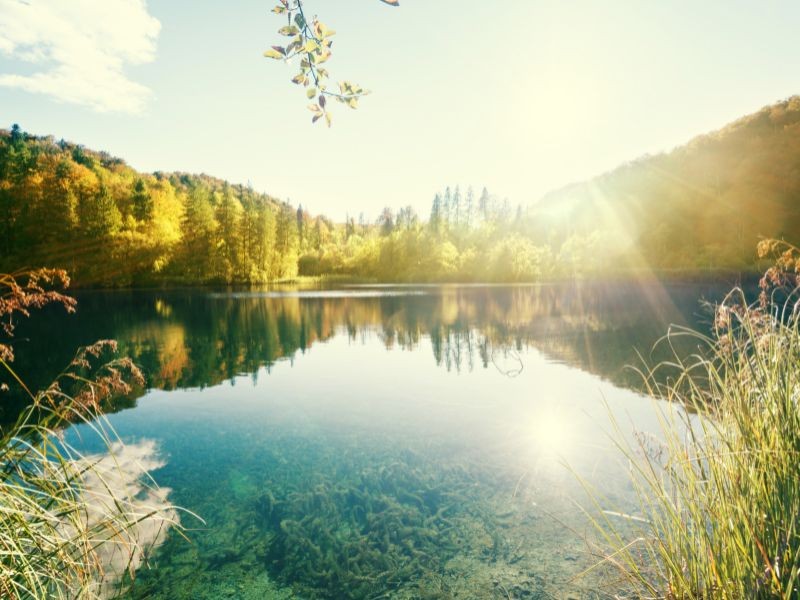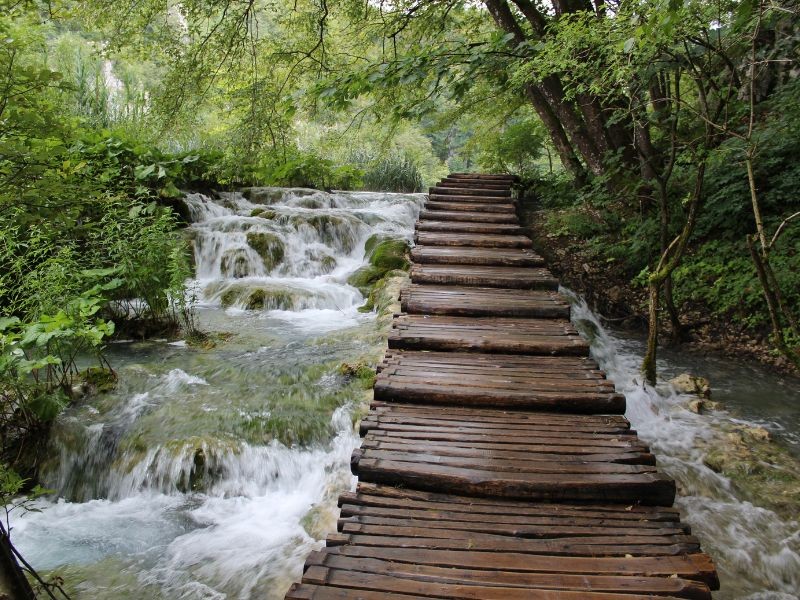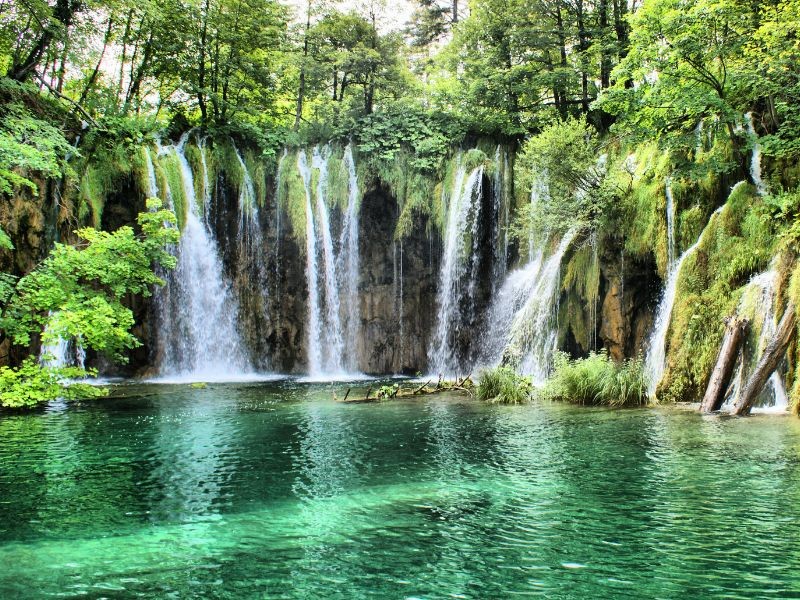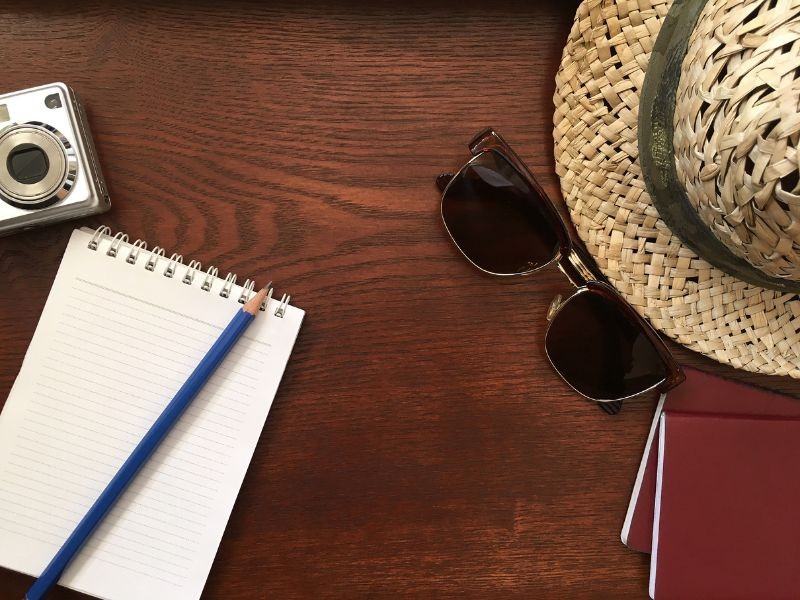Known worldwide by travelers, nature lovers, and photographers lucky enough to snap one of Mother Nature’s best works of art, Plitvice Lakes is no stranger to the spotlight. Though that’s not surprising, as 16 cascading waterfalls flow over dense forest vegetation, tucked into a mountainous region to form a picturesque backdrop the best CGI in films would find challenging to replicate.
This 295-sqm karst and forest landscape looks as though fairies rule it, a dreamland that is so pristine it could be one of the world's wonders. Plitvice Lakes National Park is a force to be reckoned with.
Croatia’s most-visited national park is also the only natural value in the country to be included in the UNESCO World Heritage List, inducted in 1979. Situated between the Mala Kapela and Lička Plješivica mountain ranges, this national park lies within Lika-Senj and Karlovac counties.
History

The Plitvice Lakes National Park area and its surroundings have been inhabited since prehistoric times thanks to its resources, including water, forests, flora and fauna, and natural shelters. The Japodes were the first to live in this area from the 12th to the 1st century BC. The Romans then took over and ruled for over six centuries. The Goths came in the 4th century AD, and the Avars before the Croats arrived in the 7th century.
Romanized Japods and Croats mixed in this area in the Middle Ages, when we saw the erection of medieval fortifications. The first Turks came at the end of the 14th century, and Ottoman rule prevailed in the Plitvice area for over two centuries. Ongoing battles left this area deserted and desolate in the 16th century, with most of its population fleeing to other places for safety.
Lika was finally liberated from the Turks in the 17th century. After that, however, there were many wars between the Habsburg Monarchy and the Ottoman Empire to define the land borders of the two empires. The area was thus mainly unknown to travelers and the general public, as everyone feared war. Eventually, roads were built to access the lakes and a Tourist House for occasional overnight stays. The first accommodation facility at Plitvice Lakes was thus erected in 1861.
In 1893, the Society for the Arrangement and Beautification of Plitvice Lakes and its surroundings was founded to promote the area and permanently preserve its beauty. The initiative to declare Plitvice Lakes a national park was launched in 1925.
Academician Ivo Pevalek was the first to scientifically explain why Plitvice Lakes needed protection. Studying the growth of mosses and algae, he concluded that the formation and growth of tufa, which helps to form Plitvice Lakes geomorphologically, is the most essential and sensitive biogenic process that is the "essence of Plitvice Lakes." These scientific findings and efforts led to the historic April 8, 1949, when Plitvice Lakes were declared the first Croatian national park. After World War II, the settlements were rebuilt, and the national park spanned 19,172 hectares, with accommodating amenities like hotels and restaurants built over the next several decades.
To protect Plitvice Lakes, the Biological Station was established in Plitvički Ljeskovac in 1961 and continued through the Ivo Pevalek Scientific Station in Mukinje. As a result, the unique geological processes at Plitvice Lakes were recognized internationally and Plitvice Lakes were included in the UNESCO World Natural Heritage List in 1979.
Today, Plitvice Lakes is the most-visited park in Croatia, reaching 1.72 million visitors in 2017. Since 2019, a limit on the number of visitors has been enforced, and 1,200 visitors per hour is the rule.
How to get there

Just because Plitvice Lakes National Park isn’t situated on the coast doesn’t mean it’s difficult to visit on your next sailing trip, especially if you’re already sailing around Dalmatia. For example, if you’re in the Zadar area, it’ll take about an hour and a half by car to reach the park, almost two hours from Šibenik, and around three hours from Split.
Main Attractions

This national park is mainly covered in forests and some small grasslands. Interestingly, the lakes cover just under 1% of the entire park! With thriving flora and fauna to admire, we don’t think you’ll be too bothered that swimming is not allowed here. You can stay active by exploring this natural paradise in many other ways.
Plitvice Lakes National Park is divided into the Upper and Lower Lakes and has two main entrances for visitors named ‘Entrance 1’ and ‘Entrance 2’. Entrance 1 starts with the Lower Lakes, and Entrance 2 with the Upper Lakes. Both options take park visitors around the attractions by wooden paths and stairs, while there are also shuttle buses between the Upper and Lower Lakes, a boat ride on Lake Kozjak, and a panoramic train.
Entrance 1 is a 3-4 hour exploration of the park, with 4,000 meters on foot. This route takes visitors through the limestone canyon of the Lower Lakes, on a boat ride across Lake Kozjak (the park’s largest lake), and a panoramic train ride. The Great Waterfall (the largest waterfall in the park at 78 meters), Sastavci waterfalls, the blue lakes of Novakovića Brod, Kaluđerovac, Gavanovac, and Milanovac, and Lake Kozjak are the main attractions of this tour.
Entrance 2 is a 2-3 hour tour with 5,100 meters on foot. You’ll also enjoy a boat ride across Lake Kozjak, visit Lake Prošćansko, the first and highest lake in the park (638 meters), and take the panoramic train to the Upper Lakes, and Great and Small Prštavci falls. You'll also see a series of smaller waterfalls on this tour.
You can choose eight different routes to tour the national park and four hiking trails. There are also plenty of traditional restaurants, buffets, and cafes should you work up an appetite on your park journey. However, it is always recommended to bring snacks and water, especially if you’re visiting in the summer.
Best time to visit

Which brings us to our next question - when is the best time to visit? While we’d like to argue there is no wrong time to visit Plitvice Lakes, especially since it is open 365 days a year, two seasons would be best for various reasons - spring and autumn. Not only do the park’s waterfalls and vegetation thrive during these seasons, but you can also explore the park's paths without hordes of tourists. To avoid peak season crowds and relentless summer heat, steer clear from visiting in July and August.
If you find yourself in Croatia, any opportunity to visit this natural work of art should be taken, no matter the time of year. And with proper planning, this stop on your next sailing trip could be one of the most memorable experiences yet!
Contact us HERE to create the best sailing route for you to visit the Plitvice Lakes along with the rest of the beautiful Dalmatian coast.
